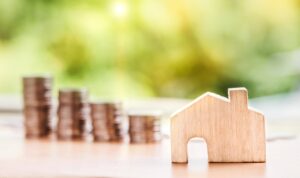The Impact of LEED Certifications on Green Building Sustainability

In an era marked by growing environmental awareness, sustainable construction practices have become a cornerstone of responsible development. Green building, a concept that integrates eco-friendly design and construction techniques, has gained significant traction in recent years. Two prominent certifications, LEED (Leadership in Energy and Environmental Design) and WELL, have emerged as vital tools in the pursuit of sustainable architecture. In this article, we will delve into the world of LEED certifications, exploring their impact on green building sustainability and their role in reducing carbon footprints.
LEED Certifications: A Pillar of Green Building
LEED Certifications, established by the U.S. Green Building Council (USGBC), have become synonymous with sustainable construction. These certifications are awarded to buildings that meet rigorous environmental criteria, encompassing energy efficiency, water conservation, materials selection, indoor environmental quality, and site sustainability. Achieving a LEED certification signifies a commitment to reducing the environmental impact of a building throughout its lifecycle.
One of the key strengths of LEED is its adaptability to various building types, from commercial offices to residential homes. Its flexibility has allowed it to permeate the global construction industry, influencing design and construction practices in diverse contexts.
Reducing the Carbon Footprint
One of the most pressing global concerns is the reduction of carbon footprints, with buildings being significant contributors to greenhouse gas emissions. LEED certifications have made substantial strides in addressing this issue. By emphasizing energy efficiency and renewable energy sources, LEED-rated buildings substantially reduce their carbon footprint. This focus extends beyond the construction phase and encompasses the operational phase, where efficient systems and sustainable practices continue to lower energy consumption.
Carbon footprint analysis is an integral part of LEED certifications. It involves evaluating the environmental impact of a building in terms of greenhouse gas emissions. By implementing strategies like solar power generation, high-efficiency HVAC systems, and LED lighting, LEED-certified buildings actively work to decrease their carbon footprint. Additionally, LEED encourages the use of low-impact building materials and sustainable construction practices, further reducing emissions associated with the building’s construction.
Promoting Sustainable Site Selection
Another vital aspect of LEED certifications is sustainable site selection. To achieve LEED certification, projects must meet specific site-related prerequisites and credits. This includes factors such as site location, land use, and transportation. By prioritizing sites that are close to public transportation and existing infrastructure, LEED-rated buildings promote eco-friendly commuting options, reducing the carbon emissions associated with daily travel.
Moreover, sustainable site selection often involves preserving natural habitats, minimizing disruption to local ecosystems, and managing stormwater runoff effectively. These practices not only contribute to the overall sustainability of the building but also enhance the surrounding environment, further reducing the project’s ecological impact.
Healthy Indoor Environments with WELL Certifications
While LEED certifications predominantly focus on the environmental impact of buildings, the WELL Building Standard complements this by prioritizing the health and well-being of occupants. A healthy indoor environment is a crucial component of sustainability. WELL certifications address factors like air quality, lighting, water quality, nutrition, and mental well-being.
LEED and WELL Certifications are not mutually exclusive. In fact, many projects pursue both to create buildings that are both environmentally responsible and conducive to occupant health and productivity. By integrating the principles of both standards, developers can create spaces that are not only energy-efficient but also promote the well-being of those who live and work within them.
Incentivizing Sustainable Practices
LEED certifications also serve as a powerful incentive for companies and organizations to adopt sustainable building practices. The market recognition and prestige associated with LEED-certified buildings can enhance the marketability of a property, attracting environmentally conscious tenants and buyers. Additionally, governments and municipalities may offer incentives such as tax credits or expedited permitting for LEED-certified projects, further encouraging sustainability.
The Broader Impact
The impact of LEED certifications extends beyond individual buildings. As more and more projects seek LEED certification, the construction industry as a whole is pushed toward greater sustainability. This ripple effect has resulted in the development and adoption of innovative green building technologies, materials, and practices. The growth of sustainable construction practices has a cascading effect on suppliers, manufacturers, and the entire construction supply chain, fostering a more sustainable industry ecosystem.
Conclusion
LEED certifications have played a pivotal role in advancing the sustainability of green buildings. By focusing on energy efficiency, carbon footprint reduction, sustainable site selection, and a range of other factors, LEED has become a global standard for environmentally responsible construction. The impact of LEED certifications extends far beyond individual buildings, shaping the industry as a whole and promoting a culture of sustainability.
In today’s world, where climate change and environmental degradation are pressing concerns, LEED certifications serve as a beacon of hope. They represent a commitment to reducing carbon footprints, conserving resources, and creating healthier, more sustainable built environments. As the demand for green buildings continues to rise, LEED certifications will remain a vital tool in the quest for a more sustainable and resilient future.






